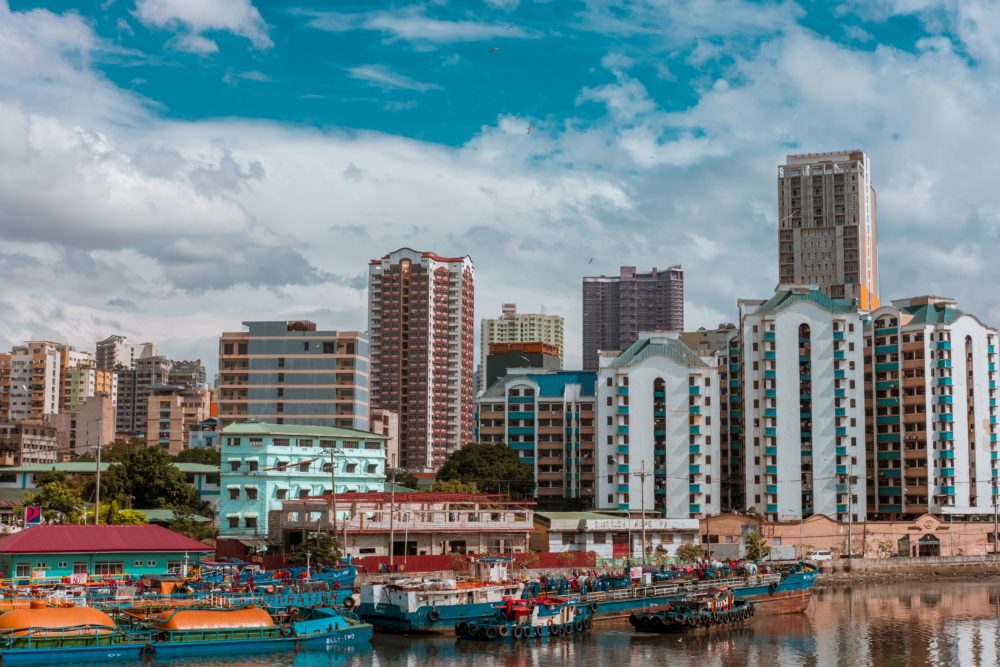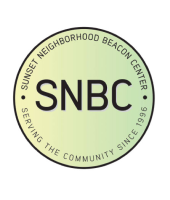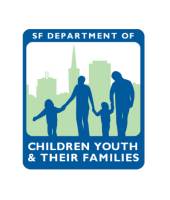Translation: Let’s Explore!
Before we go off to explore, there’s a couple things I want to mention. Mini aralin sa kasaysayan (history lesson) to explain a couple things. Una, ang dalawang opisyal na salita sa Pilipinas ay Tagalog at ingles. (First, the two official languages in the Philippines are Tagalog and English) To my understanding, they also have eight major dialects. I know of Tagalog, Kapampangan and Ilocano, but there are also Cebuano, Bikol, Hiligaynon, Waray, and Pangasinan. Where we’re going, we’ll most likely run into locals speaking Tagalog. I’ve heard this back in the US, but, Tagalog is pronounced “tuh-gaa-luhg.” Despite its spelling, it’s not “tag-a-log,” and the language isn’t necessarily referred to as “speaking filipino.” Tagalog is also most definitely not a type of girl scout cookie like “Tagalongs.”
If you know Spanish, you may realize some words are quite similar or literally the same if you were to compare them with Tagalog. Well, it’s not a coincidence. Maraming mga salitang Tagalog (Many Tagalog words) have a Spanish, origin due to the Spanish colonization of the Philippines from around 1565 to 1898. The Spaniards have influenced not only our language, but our culture. From language, to religion, to food, three hundred and thirty-three years of assimilation to their culture. Although their rule resulted in some traumatic times, their part of culture we kept woven within our own is greatly appreciated.

The same goes for the United States – there’s a reason why one of the official languages of the Philippines is English. Although the Americans did assist in freeing the Philippines from Spanish colonization, the Philippines was then transferred under their control as a colony. During this time, there was an abundance of Filipinos who spoke the hybrid language of Taglish (Tagalog and English). Filipino children were also taught English in school. If you were to get lost, you can most likely ask some of the locals. I’m sure they’d be more than happy to help you out.
Lastly, we’re mainly going around the Luzon Island, the Northernmost island of the Philippines. We’ve given you each 5,135 pesos each, the Philippine currency. For your understanding of the conversions, around 51-52 pesos (also called piso), is one dollar in US currency. If you did the math, you’ll know we’ve given you about a hundred US dollars.

Now, for our first stop, Metro Manila.
Metro Manila consists of four main cities, one of which, is the capital of the Philippines, Manila. The three other cities besides the capital are Quezon, Pasay, and Caloocan. If you ever want to get shopping done, you do it in Metro Manila. There is an overwhelming amount of enormous malls around the area. Sobrang, sobrang malaki! (Super, super big!)
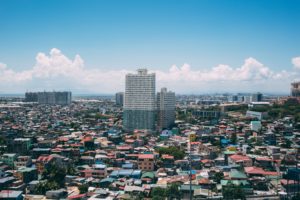
Greenhills Mall is located in San Juan City, within Metro Manila. The mall feels a lot like a fusion of a flea market and a mall, so basically, just an indoor flea market. I’d say this mall is a little more unique, compared to the other malls we’ll be seeing. You’ll most likely see a variety of stalls rather than individual stores. You can find all kinds of things like clothes, electronics or jewelry. You’ll also be able to find someone to fix your shattered phone screen, or to jailbreak it! (Origin story of my iPhone 5c back in the day.) Bargaining is commonly practiced in these parts. Greenhills Mall is where your haggling skills can truly be put to the test.
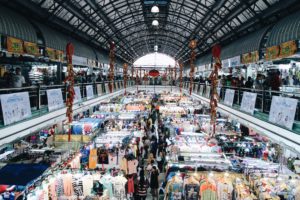
Quezon City houses the Triangle of North Manila, also known as the TriNoma Mall. Not only does the mall have the Landmark Market within it, another huge department and supermarket phenomenon, but also connects to the largest mall in the Philippines. By walking across the connector of the two malls on what’s known as the Sky Garden bridge, you’ll find yourself in SM City North Edsa Mall.
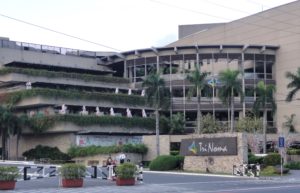
SM City North Edsa Mall is, as of 2019, the fifth largest mall in the world, according to the World Atlas. It was the first SM supermall to be opened in the Philippines. From there started a long chain of SM malls scattered across the country. SM malls has arguably everything you could ever possibly need. If you’re looking for pasalubong (souvenirs) to bring back, this might be a good place to start.
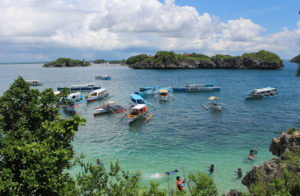
Traveling up North along the West coast, we reach Alaminos City of Pangasinan Province. If you were listening to the stories on the plane ride here, you may recall that this is where the Hundred Island National Park is. Feel free to get on a boat and venture off into the waters of Lingayen Gulf while we’re here. Not-so-fun historical fact, but this is where the Japanese won the battle of the Pagsalakay sa Gulpo ng Lingayen (Invasion of Lingayen Gulf) during World War II against American and Filipino troops.
Continuing further up the coast, we enter through Ilocos Sur Province to see the historical city of Vigan, a city known for its preserved architecture from the Spanish colonization. One of the famous spots is Calle Crisologo, also known as Mena Crisologo Street. Crisologo is made up of cobblestone roads, horse-drawn carriages, and rustic-looking buildings. Walking through the streets of Vigan City certainly doesn’t feel like you’re in the Philippines. I can’t speak for whether it has the Spanish vibe, taking into account that I’ve never been, but you can make your own judgement on the place.
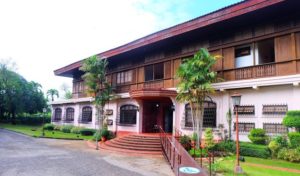
Next on the list is the Ilocos Norte Province. We’re first going to Paoay City to visit the Malakanyang sa Hilaga (Malacañang of the North). The Malacañang of the North was built in 1977, and served as the official house of President Ferdinand Marcos during his presidency. The first lady, Imelda Marcos, had it built for the President’s 60th birthday. It later was open to the public and became a presidential museum in 2011.
There’s also another “Malacañang” in Manila, Malacañang Palace. This palace is where the presidents usually live, but some may choose not to. The current president, Rodrigo Duerte, does not live in Malacañang Palace.

Lastly, to wrap up today’s sight-seeing, I think it’s time to venture through the town of Pagudpud to Saud Beach! What a way to end in relaxation surrounded by white sands and the crystal blue South China Sea.
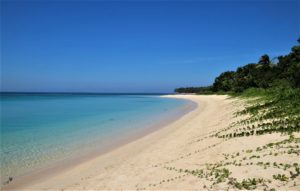
Although we don’t have time to travel to central Philippines in Visayas Island, I’d definitely recommend it if you ever end up here again. The Chocolate Hills in Bohol Province is a breathtaking sight to see! If you’ve ever done Filipino karaoke, you might recognize the place as one of the backgrounds. There are four legends associated with the formation of the Chocolate Hills. The first one told of two giants that had a feud with one another. Across the span of many days, they hurled rocks, boulders, and sand at each other. After some time, they both grew tired and forgot about their feud, but also forgot to clean up the mess they made which eventually formed the Chocolate Hills. The next legend also had to do with a giant named Arogo, who fell in love with a mortal named Aloya. When Aloya died, Arogo cried in despair and his dried tears eventually formed the Chocolate Hills.
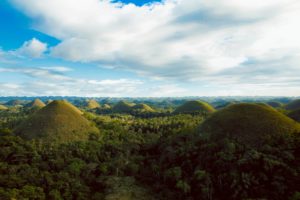
The third legend was about a giant carabao, an animal in the Philippines that’s very similar to a water buffalo, who ate all of a town’s crops. The villagers decided to outsmart the carabao by placing all their spoiled food in the mercy of the carabao. The carabao ate the spoiled food, but its stomach couldn’t handle it. The carabao ended up emptying its stomach through defecation, and its feces apparently became the Chocolate Hills. Wasn’t really a big fan of that one. The last legend starred another giant, this one named Miguel, who ate everything he saw. He fell in love with a girl he saw named Adrianna. In order to win her over, he lost weight by excreting the food he ate. Miguel won her love, and that result of his excretion became the Chocolate Hills. All in all, the theories of the formation of the Chocolate Hills as the result of love or eating.
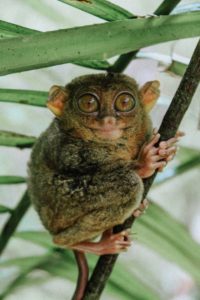
There is also a tarsier sanctuary in Bohol. Philippine tarsiers, or “mamag” in Tagalog, are the smallest primates in the world. They’re really high jumpers, and hunt in the night as nocturnal animals. Tarsiers have really heavy and big eyes to the point where they have to move their head to see farther to their left or right. If you do see these tarsiers, please be really respectful towards them. They are easily stressed out if you take pictures with flash, or stick a camera in their faces. When they are stressed, it may drive them to hit their heads on the trees, and result in their death due to their thin skulls. Take caution in their presence, and absolutely do not try to illegally raise them in captivity. Trust me when I say that they do not do well away from their natural home.
Now I think it’s time to indulge in one of the most important aspects of filipino culture, the pagkain (food). Kain tayo! (Let’s eat!)

